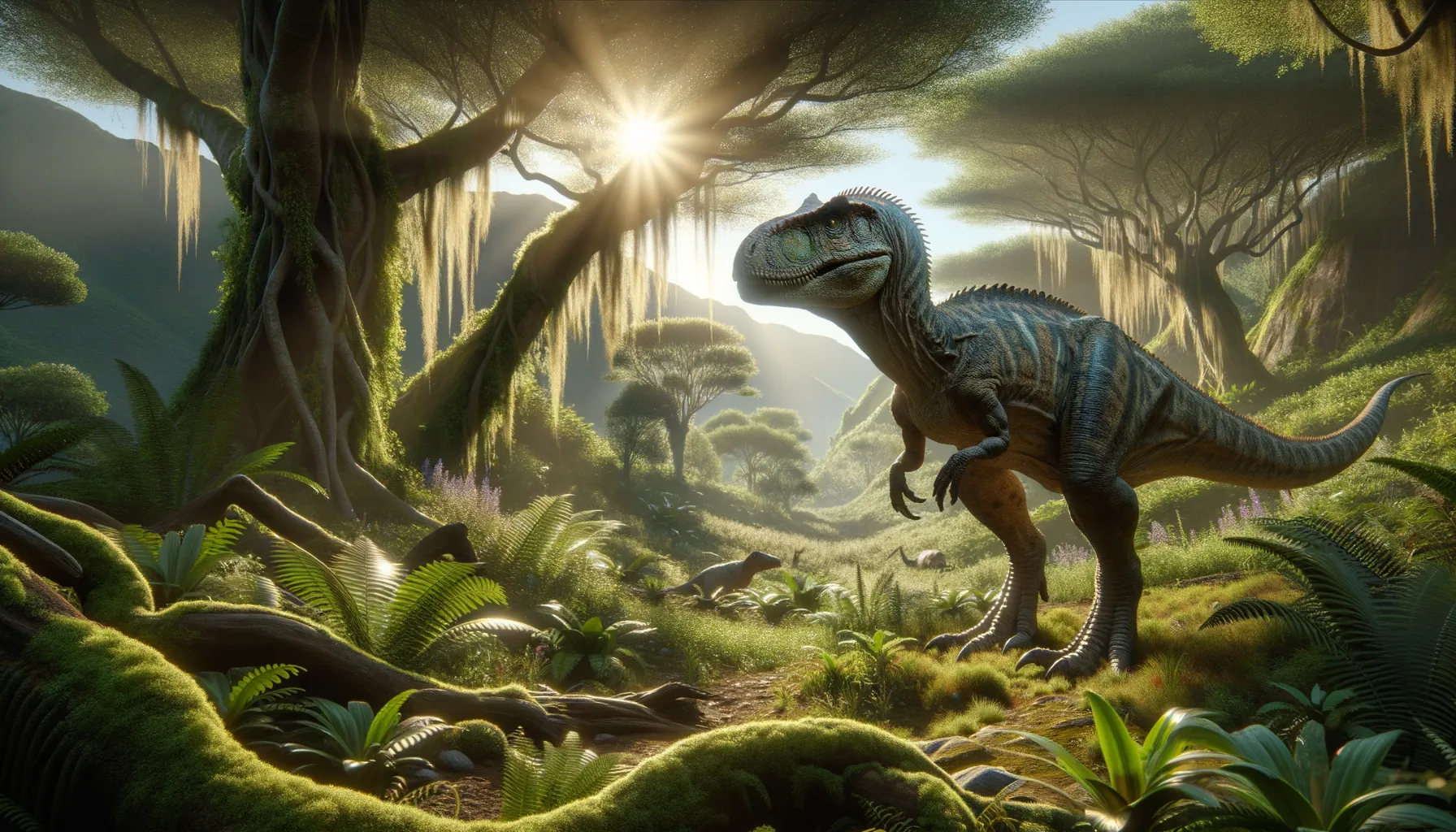
Hoplitosaurus
Armored guardian of the prehistoric world.
Period
Cretaceous
Length
About 6 meters in length.
Height
Approximately 1.5 meters tall.
Weight
Around 2 tons.
Hoplitosaurus was an armored dinosaur that roamed the Earth during the Cretaceous period. Its name means 'armed lizard', reflecting its defensive adaptations. This dinosaur was a part of the nodosaur family, known for their plated bodies and lack of a tail club. It primarily inhabited regions that are now parts of North America, occupying environments that offered ample vegetation.
Diet
As a herbivore, Hoplitosaurus fed on low-lying plants, ferns, and shrubs. Its diet likely consisted of tough and fibrous vegetation, suited to its grinding teeth.
Hunting
Hoplitosaurus did not hunt as it was a herbivore. It grazed on vegetation and relied on its sense of smell to locate food.
Environmental challenges
Hoplitosaurus faced challenges such as predators, including larger theropods. Its heavy armor provided a defense against attacks, making it hard for predators to harm it. Climate changes and vegetation shifts could have also affected its food sources, requiring adaptation to new plant types.
Speed
Likely slow due to its heavy armor.
Lifespan
Estimated to be around 30 years.
First discovery
Discovered in the United States in the late 19th century.
Fun Facts
- Hoplitosaurus was an armored dinosaur that lived during the Early Cretaceous period, around 115 million years ago.
- It belonged to a group of dinosaurs known as nodosaurs, which were characterized by their heavy body armor and lack of tail clubs.
- Hoplitosaurus means 'armed lizard,' highlighting its protective bony plates and spikes along its body.
- This dinosaur was a herbivore, feeding on low-lying vegetation with its beak-like mouth.
- Fossils of Hoplitosaurus have been mainly found in North America, particularly in states like South Dakota.
- Despite its intimidating armor, Hoplitosaurus was relatively small compared to other dinosaurs, measuring around 5 meters in length.
- Hoplitosaurus used its body armor as a defense mechanism against predators, much like modern-day armadillos.
Growth and Development
Hoplitosaurus likely experienced steady growth throughout its life, with its armor developing as it matured. Juveniles would have been more vulnerable and required protection from adults. The development of its tough exterior was essential for survival, offering defense against predators.
Habitat
This dinosaur lived in forested environments with abundant low-lying plants. It preferred areas with dense vegetation, providing both food and shelter. The landscape included floodplains which were capable of supporting its weight and size.
Interaction with other species
Hoplitosaurus likely interacted minimally with predators, relying on its armor to deter attacks. It may have coexisted with other herbivores, sharing grazing grounds without significant competition. Its social structure is unclear but may have included group living for better defense.
Natural lifespan
In favorable conditions, Hoplitosaurus could live for about 30 years.
Reproduction
Hoplitosaurus likely reproduced by laying eggs in nests. It may have exhibited some form of parental care, guarding eggs and hatchlings. Hatchlings were vulnerable, requiring natural camouflage and protection from adults for survival.
Social behaviour
Hoplitosaurus may have lived in small groups for protection and social interaction. Group living offered increased vigilance against predators and helped young individuals thrive. Its social behaviors might have included shared feeding grounds and communication through physical displays.
Fossil locations
Fossils of Hoplitosaurus have primarily been found in the United States. The discovery sites are mostly in regions known for Cretaceous period deposits. These locations include formations in areas of North America rich in dinosaur fossils.
